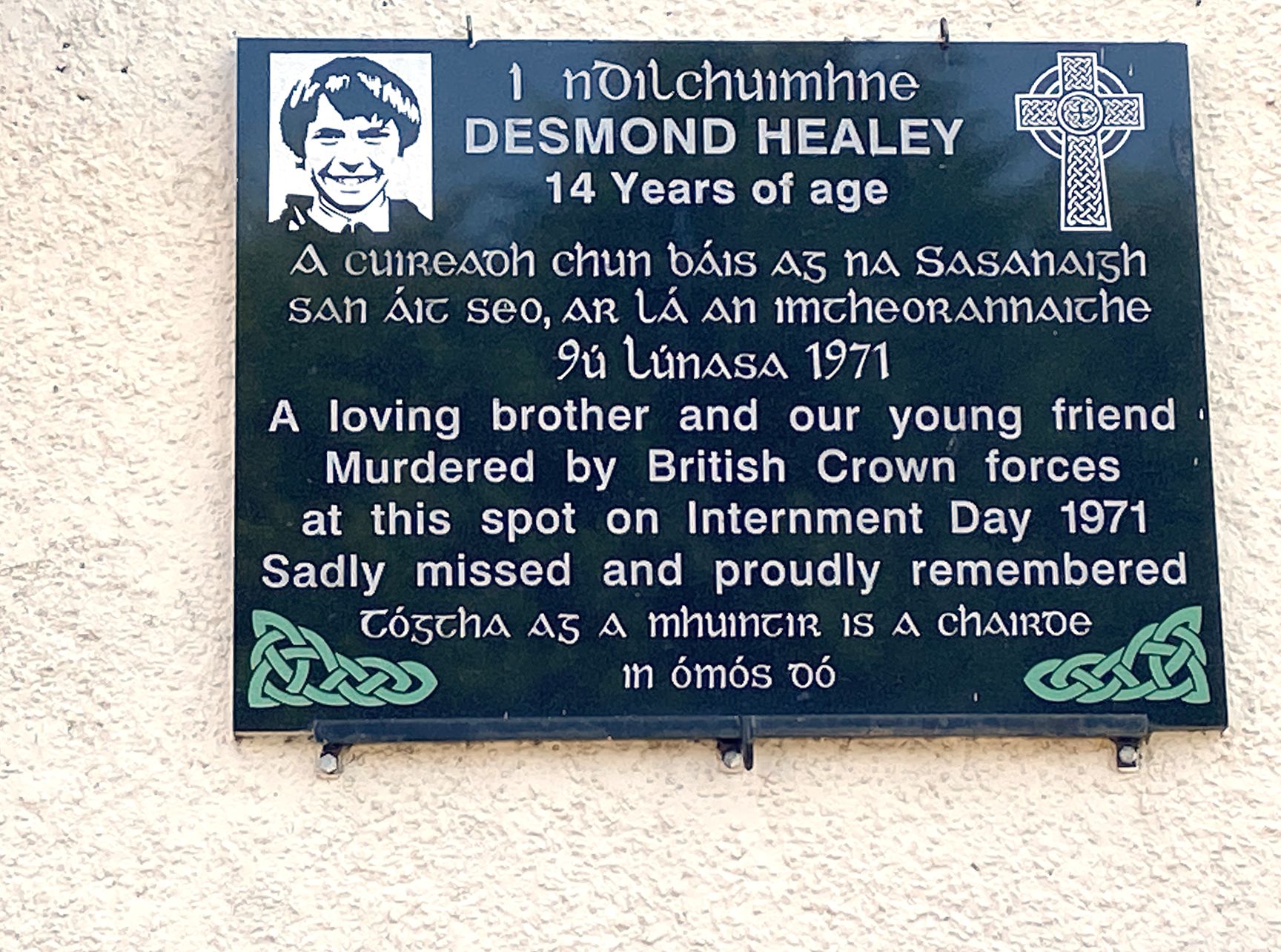AT 4am on Monday, August 9, 1971, Operation Demetrius was enacted – later to be known as internment or detention. Hundreds of men from all over the North were arrested by British soldiers with help in identification from RUC Special Branch.
Their homes were raided, they were brutalised and humiliated. Most of the men were taken to Long Kesh, a former RAF station near Lisburn converted into a World War Two-style prisoner-of-war camp. Some were taken to Crumlin Road Gaol, the Maidstone prison ship, Girdwood, Ballykinler and Magilligan. 12 of the men – the Hooded Men – were subjected to in-depth torture via the ‘five techniques’ developed by the British in earlier colonial operations: wall-standing; hooding; exposure to piercing noise; deprivation of sleep; deprivation of food and drink. They were also subjected to mock executions. This took place in Shackleton Barracks, Ballykelly.
The intelligence used in the round-up was based on inadequate, inaccurate and out-of-date information, leading to the arrest of, for instance, sons and brothers of deceased republicans; ex-civil rights activists; people with the same name as the person on the list.
Many of the internment papers were illegal, even under the questionable emergency legislation drawn up, as the papers weren’t signed by the relevant person.
Later, a number of women and children were interned in Armagh Gaol. No loyalists would be interned until 1973.
The Paras pushed up Lenadoon Avenue under the cover of a barrage of CS gas and retrieved Dessie’s body. The Paras lifted Dessie’s body and showed him to the crowd before throwing him into a Pig armoured car. The vehicle drove to the Stewartstown Road and Dessie was left dying there on a green.
In Lenadoon, many young people responded to the invasion by going on to the streets. 14-year-old schoolboy Dessie Healey was shot dead in Lenadoon Avenue by the Parachute Regiment, who later lied that they were reacting to a hail of petrol bombs.
Of the two youths who went to assist Dessie – who had been shot in the back – one narrowly escaped with his life, having his belt shot off; the other was hit several times with rubber bullets.
The Paras pushed up Lenadoon Avenue under the cover of a barrage of CS gas and retrieved Dessie’s body. The Paras lifted Dessie’s body and showed him to the crowd before throwing him into a Pig armoured car. The vehicle drove to the Stewartstown Road and Dessie was left dying there on a green.
An identifying photofit was later released which showed a much older man and, not surprisingly, Dessie’s family didn’t recognise it.
Originally from the Falls, the Healeys had moved to Bunbeg in Lenadoon. Dessie had a twin brother and two other brothers. Most of us were happy-go-lucky kids, enjoying our lives until this violence was visited upon us. Many of that generation who witnessed this atrocity went to jail or were killed by British forces and loyalist death squads.
Stormont Prime Minister Brian Faulkner and the Ted Heath’s Tory Government (which was much less enthusiastic about the measure) saw internment as the solution to a deepening security problem, but history shows that the year following internment was to be the bloodiest of the conflict.
The Paras were used as shock troops and the results were seen on the streets of Belfast and Derry. Giving these people amnesties will not lead to justice, but more of the same – more concealment of the dirty war.
On the 50th anniversary of Dessie’s murder we remember Dessie Healey and his family. All we can give them now is the truth.
Ní dheanfaidh muid dearmad.
Cairde Dessie Healey





